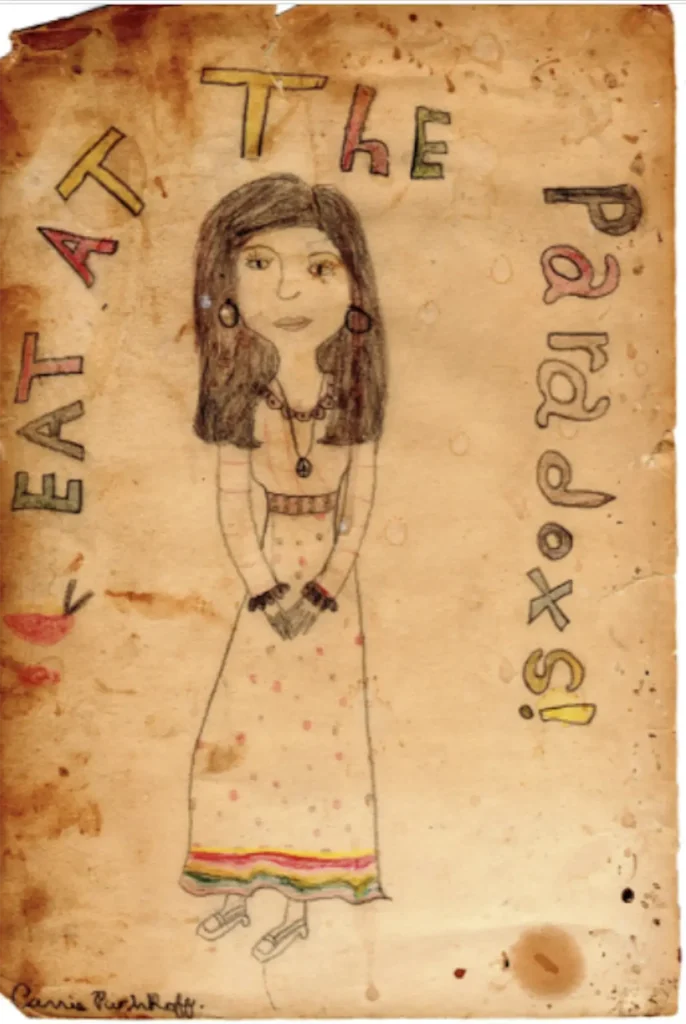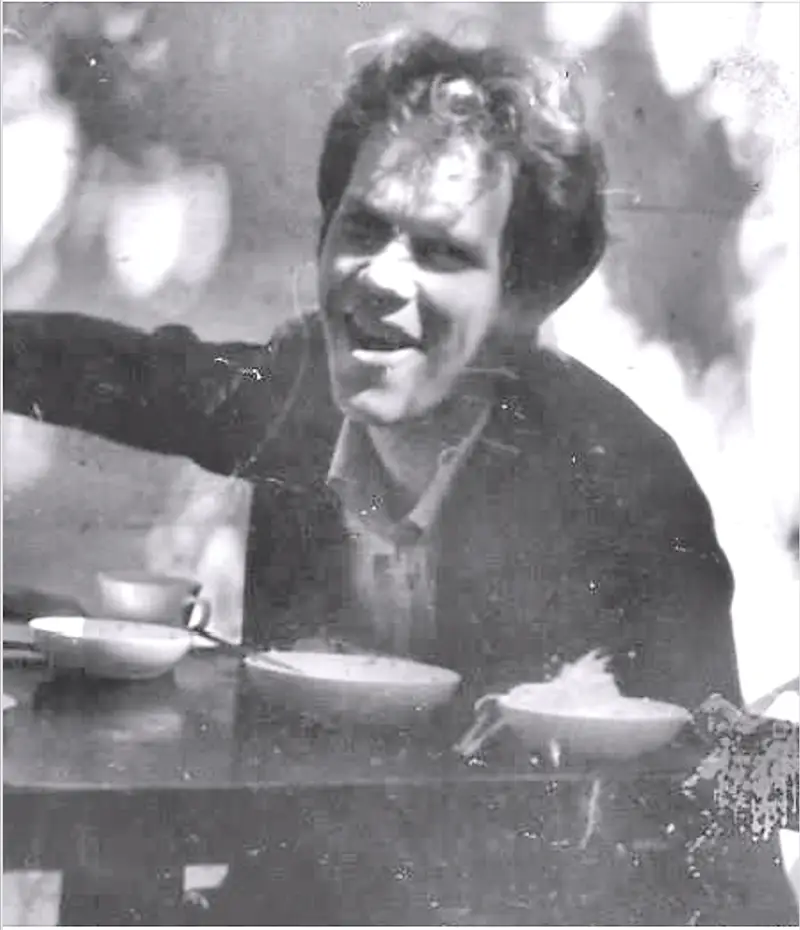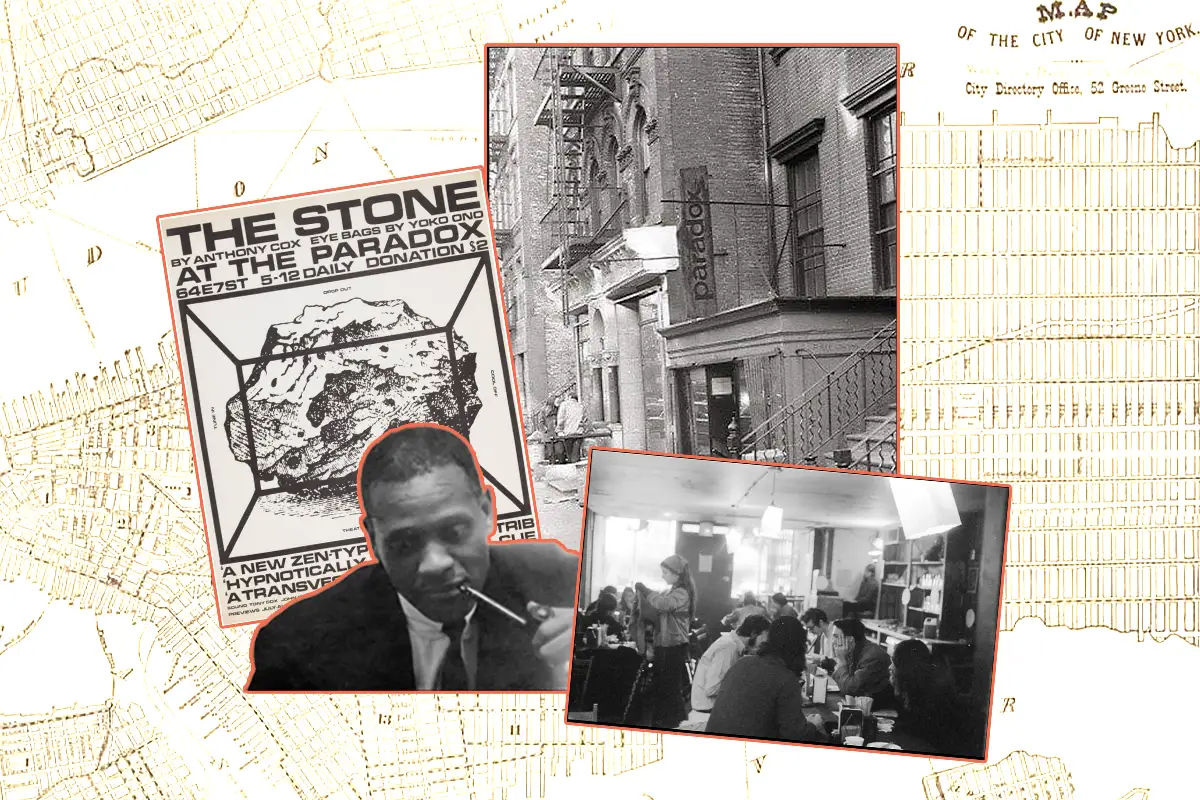In June of 1960, the FDA raided an unassuming building at 64 East 7th Street in Manhattan’s East Village. Then a cafe called the Cart Wheel, the space was operated by a 28-year-old Harvard graduate named Barron Bruchlos, who—according to a newspaper article from the time—had “his troubles with Federal agents over a little-known drug called peyote, which he had been selling to beatniks.”
Six months after the raid turned up 311 pounds of the psychoactive cactus, Bruchlos committed suicide by shoving a pencil up his nose. This incident is far from the most interesting thing to have happened at 64 East 7th Street.
The story is, in fact, just one of many wild-but-true tales David Hajdu discovered when researching the history of the building, a meticulous three-month dig into New York City’s historical records that ultimately resulted in The Parsonage: True Tales of Love and Anarchy at 64 East 7th Street.

Made in collaboration with fellow musicians including Grammy-nominated composer Theo Bleckmann, vocalist Alicia Olatuja (famous for, among other things, singing at the second inauguration of Barack Obama), and pianist/composer Dan Tepfer, the project is a libretto of eight songs, each inspired by a different era of the building’s history. Incorporating elements of chamber music, opera, and jazz, each song shares some of the history of the building during the era it’s written about. (Songs do not explicitly evoke the musical styles of that era, with Hajdu wanting to avoid pastiche.) The first, and likely only, live performance of The Parsonage was performed by Hajdu and his collaborators in New York City this past April.
Hajdu—a Professor of Journalism of Columbia University and a longtime music critic and composer—had been wanting to create a thematically linked song cycle in collaboration with other composers. He had a hunch this structure could be employed by telling the history of a building, and his research singled out 64 East 7th Street as the ideal subject.

“It was, ‘Then that? Then that? Then That?’” Hajdu recalls of his research. “It all seemed very unlikely, and at that point, I was sucked into the vortex and the mystery of the place.”
How to Grow Shrooms Bundle
Take Both of Our Courses and Save $90!
The site was originally constructed around 1840 as the parsonage of Evangelical Lutheran Church of St. Mark, where parishioners were largely German immigrants who’d arrived in the US to labor in the city’s mills and sweatshops. The Parsonage’s first song, “Sailing To The Sunday School Picnic” tells the story of June 15, 1904, when roughly 1,300 of these parishioners boarded a steamboat headed to a church picnic in Long Island. But the boat caught fire, and every person aboard was killed. The incident was New York’s deadliest disaster until the 9/11 attacks.

“The kids had never taken swimming lessons, and their clothes were too heavy,” says Hajdu. “The fact that they were poor correlated to the circumstances of this tragedy.”
Indeed, the building’s location in a low income neighborhood meant, Hajdu says, an “absence of oversight and supervision.” While this could foster dangerous circumstances, it also meant that with “nobody watching, all sorts of fabulous things could happen.” And so they would.
In the early 1920s, 64 East 7th Street became the base for a pro-Communist newspaper, with, Hajdu says, “money going directly from the communist party to this building,” which “was probably a hotbed of spies.” One of these spies was suspected in a 1920 bombing of Wall Street, an event recapped in The Parsonage’s “Ballad Of The Man Who Laughed,” which advises that the “tapes weren’t all that went tick.”

64 East 7th Street later entered its beatnik era with the arrival of the Cart Wheel, Bruchlos, and his 311 pounds of peyote. Thereafter, it transformed into Les Deux Mégots, a café where poetry readings were given not only by the likes of Allen Ginsberg, but—once a week, when an “all poets welcome” sign was posted outside—and anyone else was inclined to speak.
“What attracted me, interested me and inspired me as a writer of both history and song lyrics,” says Hajdu, “is that [the building] has always represented a home for outré thinking, outsider status, and outsider ideas.”

Such outsiders sat down for salads and tofu when Les Deux Mégots became The Paradox, the city’s first macrobiotic café where Yoko Ono waitressed and Loudon Wainwright III did odd jobs. In the 70s, the space again transformed into the homebase of a mysterious commune called Rainbow Family of Living Light, before it then became a bookshop, Books ‘N Things. This is the incarnation of 64 East 7th Street that Hajdu first walked through the door of while a student at N.Y.U. in the mid-70s.
The outlier spirit that drew Hajdu to the East Village’s proto-punk ecosystem—he was a regular at CBGB’s and Max’s Kansas City, and Patti Smith and Lou Reed both shopped at Books ‘N Things—is the same essence that nearly 50 years later inspired The Parsonage.

“To me, New York City was always kind of a dreamscape and fantasy world where anything’s possible,” says Hajdu. “I was attracted to the building because it kind of perpetuates that mythological conception of the city—this romantic, idealized idea of New York. It kept that dream alive for me.”
It’s a dream that’s still alive perhaps only conceptually, as—after runs as various retail stores in the 90s and early 2000s—the building has been swept into Manhattan’s intense and ongoing gentrification. The title of The Parsonage’s final song, “Eighteen Million Six,” refers to the building’s listing price during its last sale, when it was purchased by a tech billionaire. The lyrics “site history not applicable” are lifted directly from the listing, with the song contrasting that phrase with lyrics recapping the fantastical history of the place heard in the prior seven compositions.

“It’s really chilling to hear,” says Hajdu.
Arguably, though, through the efforts of Hajdu and his collaborators, The Parsonage serves as an extension of the history it presents, carrying on the outré and almost mystical spirit that’s defined the place for more than 180 years. With the project, Hajdu has also deepened his own creative relationship with the city.
“As a young person I had this conception of New York that was mediated by art, by the movies, and by books,” he says. “It was a romantic construction and an idealized construction—basically, a fictive place, a place for the imagination.”
Fittingly, in yet another reflection of the era, the spirit of romance and imagination embodied by 64 East 7th Street can now simply be accessed through Spotify.


DoubleBlind is a trusted resource for news, evidence-based education, and reporting on psychedelics. We work with leading medical professionals, scientific researchers, journalists, mycologists, indigenous stewards, and cultural pioneers. Read about our editorial policy and fact-checking process here.

DoubleBlind Magazine does not encourage or condone any illegal activities, including but not limited to the use of illegal substances. We do not provide mental health, clinical, or medical services. We are not a substitute for medical, psychological, or psychiatric diagnosis, treatment, or advice. If you are in a crisis or if you or any other person may be in danger or experiencing a mental health emergency, immediately call 911 or your local emergency resources. If you are considering suicide, please call 988 to connect with the National Suicide Prevention Lifeline.



